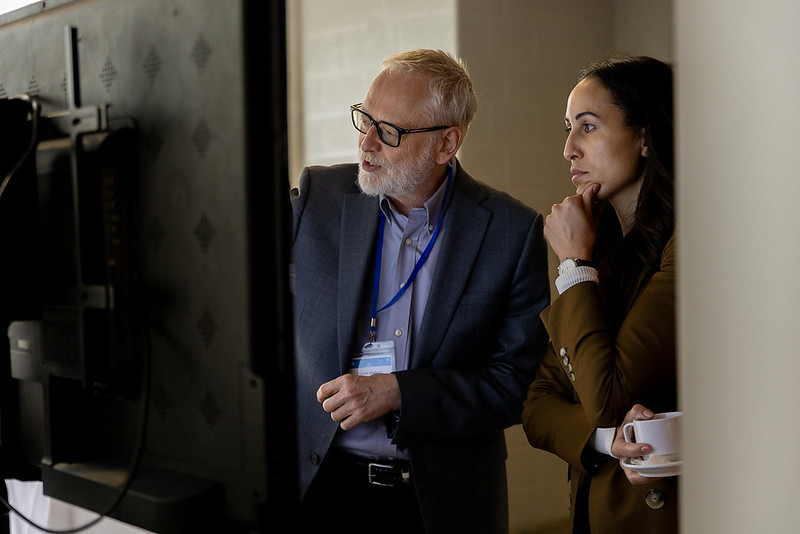Project Overview
Today, most international migrants settle in cities, leading to a condition known as “super-diversity.” This concept captures the complex and evolving layers of nationality, ethnicity, language, religion, and other traits that define urban populations. As new migrants arrive, they often settle in areas already shaped by earlier waves of migration, creating a dynamic and intricate social fabric.
The project involves developing a website that enables users to interact with sophisticated data about social complexity in Canada’s 6 largest metropolitan areas: Toronto, Montréal, Vancouver, Calgary, Edmonton and Ottawa-Gatineau. Data are drawn from the administrative records of Immigration, Refugees, and Citizenship Canada and the 2021 census. This is primarily a public communication effort.
Research Questions
- How do immigrants integrate into large Canadian cities?
- How can people be encouraged to ‘see’ social complexity?
Methods
- Geospatial Analysis
- Statistical Analysis
Collaborators
UBC Centre for Migration Studies
- Principal Investigator: Dan Hiebert (Emeritus, Geography)
Max Planck Institute for the Study of Religious and Ethnic Diversity
- Steven Vertovec (Professor, Anthropology)
University of Alberta School of Urban and Regional Planning
- Sandeep Agrawal (Professor, Earth and Atmospheric Sciences)
Lethbridge University
- Bronwyn Bragg (Assistant Professor, Geography)
Centre Urbanisation, Culture et Société (INRS)
- Annick Germain (Professor, Sociology)
University of Ottawa
- Brian Ray (Associate Professor, Geography)
Outputs
Website
Access the Superdiversity website: www.superdiv-canada.mmg.mpg.de
Media Coverage
“How diverse is your neighbourhood? A new website shows how immigration to Canada has transformed our cities.” The Toronto Star. December 16, 2024. https://www.thestar.com/news/canada/how-diverse-is-your-neighbourhood-a-new-website-shows-how-immigration-to-canada-has-transformed/
“The big upside of thinking small on immigration.” The Globe and Mail. June 16, 2025. https://www.theglobeandmail.com/opinion/editorials/article-upside-of-thinking-small-on-immigration/
Publications
Hiebert, Daniel. 2024. “Immigration and a Population Strategy for Canada (Part 1, The Regions).”
Hiebert, Daniel. 2024. “Immigration and a Population Strategy for Canada (Part 2, The Regions).”
Daniel Hiebert. 2025. “Balancing Canada’s Population Growth and Ageing Through Immigration Policy.” Commentary 682. Toronto: C.D. Howe Institute.
Podcasts
How to fix Canada’s immigration system? – It’s Political with Althia Raj, October 11, 2024
Canada’s Aging Population, Demographics and Immigration, with Daniel Hiebert (#162) – Borderlines – Canadian Immigration Law Podcast, May 2, 2025
Presentations
“Visualizing Superdiversity in Canadian Cities” presented by Daniel Hiebert, November 23, 2023.
“Visualizing Superdiversity in Canadian Cities” presented by Daniel Hiebert at the Institute for Studies of Canada, McGill University, May 7, 2024.
“Visualizing Superdiversity in Ontario Cities” presented by Daniel Hiebert at IRCC, Ontario Division, May 18, 2024.
“Visualizing Urban Superdiversity” presented by Daniel Hiebert at the Max Planck Institute, Germany, May 27, 2024.
“Steven Vertovec in conversation with Dan Hiebert,” by The Max Planck Institute for the Study of Religious and Ethnic Diversity, June 28, 2024.
“Talking about migration: Words, data, images” presented by Daniel Hiebert at the Scholars of Excellence Workshop, Toronto, October 1, 2024.
“Telling the Story of Canadian Immigration Through Data” presented by Daniel Hiebert at the La Maisonée, Montreal, November 4, 2024.
“Toward more Productive Policy Research” presented by Daniel Hiebert at the Department of Anthropology, University of Montreal, November 5, 2024.
“Developing Immigration Policy” presented by Daniel Hiebert at the Concordia University, Political Science, Montreal, November 5, 2024.
“Visualizing Superdiversity in Canadian Cities” presented by Daniel Hiebert at the Canadian Urban Institute, Toronto, November 8, 2024.
“Visualizing Superdiversity in Canadian Cities” presented by Daniel Hiebert at McGill University, Montreal, November 7, 2024.
“Superdiversity in Canadian Cities” presented by Daniel Hiebert at the IRCC Research Matters Series, January 15, 2025.
“Superdiversity In Canadian Cities – A Website Demonstration” presented by Daniel Hiebert at the University of Alberta, January 28, 2025.
“Superdiversity in Canadian Cities” presented by Daniel Hiebert at the BC Provincial Summit 2025 organized by AMSSA, February 5, 2025.
“Superdiversity in Canadian cities website” presented by Daniel Hiebert at the Calgary Police Services, June 10, 2025.
“Superdiversity in Canadian cities website” presented by Daniel Hiebert at the Edmonton Police Service, June 25, 2025.
“Superdiversity in Canadian cities website” presented by Daniel Hiebert for BC Statistics, July 22, 2025.
“Immigration and Population Dynamics” presented by Daniel Hiebert for the Ministry of Post-Secondary Education and Future Skills, July 21, 2025.
Exhibition
The Superdiversity website was exhibited at the CERC in Migration and Integration (TMU) annual conference in Toronto, May 13-15, 2025.
Project Status
This project is currently in the Data Analysis and Knowledge Mobilization phases.

International Migration: From Root Causes to Drivers, May 13-15, 2025
Photo by Bridging Divides and CERC Migration
Featured News
This research was undertaken thanks in part to funding from the Canada First Research Excellence Fund.

